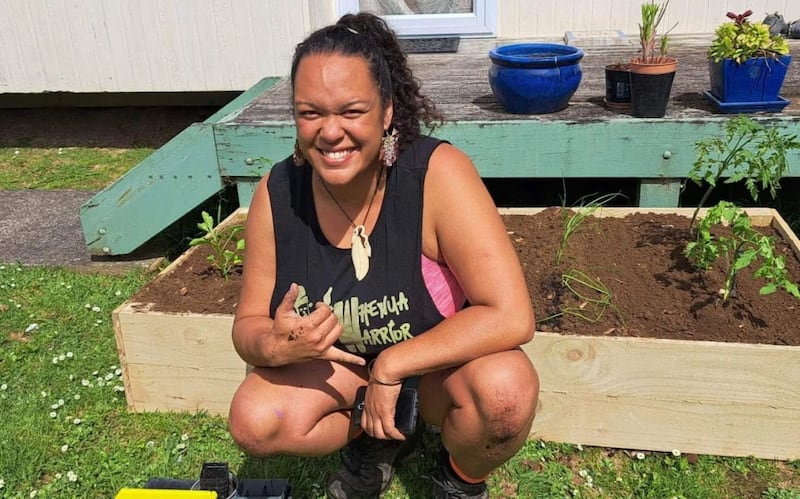This article was first published on RNZ.
The Māori economy is “thriving”, recent statistics have revealed, but a new report shows Māori businesses do not always measure their success monetarily.
According to the prior Te Ōhanga Māori 2023 report, Māori entities grew from contributing $17 billion to New Zealand’s GDP in 2018 to $32 billion in 2023, turning a 6.5 percent contribution to GDP into 8.9 percent.
The Māori economy asset base has grown from $69 billion in 2018 to $126 billion in 2023 - an increase of 83 percent.
Released on Wednesday by the Wellbeing Economy Alliance Aoteaora, the Amplifying Māori approaches: The transformative potential of Māori economies report from lead author Matthew Scobie (Kāi Tahu) and co-author Tayla Forward (Ngāpuhi), suggests Māori economies revolved around “taonga with labour organised through mahi and reciprocal exchanges based on utu”, or repayment.
Forward, a researcher in economics and political economy based in Tāmaki Makaurau, said the Māori economy was “big, thriving and active”.
“But what that captures is sort of different. Are we thinking about Māori businesses that are operating in the usual dominant economic system, or are we talking about something that takes place according to Māori logic?
“Considering there’s parts of the economy that are taking place on a different logic in the dominant system, that’s the Māori economy that we’re most interested in unleashing, that’s the part that is an expression of mana motuhake Māori.”

There was not much that separated the Māori economy from the contemporary setting; it was just an umbrella-term used for authorities, businesses, and employers who self-identified as Māori.
But it was more than that. While an economy revolved around the production and consumption of goods and services and the supply of money, Māori businesses often built off tikanga, or Māori lore, to help their communities - such as iwi and hapū, and beyond.
“We talk a lot in this report about the ways that those pursuing pakihi Māori (Māori business) have to take on these hybrid strategies to strategically navigate the dominant system,” Forward said.
“Instead of just aiming to increase our share in the dominant system, we take up a demand to change the shape of the dominant system, and those things that currently sit beneath the surface of the dominant system can be unleashed.”
There were four case studies prominent in the report - each an example of “Māori logic” combined with old and new ways of business, providing perspectives on housing, food sovereignty, trading and iwi authority, respectively.
“They strike up against the system, they strike up against pūtea, and the need to sort of go between worlds all the time.”
Does Māori logic work?
A case study by Danielle Webb focused on Kelly Francis’ Whenua Warrior charitable trust.
In 2017, Francis left her corporate job to grow an edible garden accessible to every New Zealander and feed the community.
The not-for-profit organisation used hua parakore (kaupapa Māori framework) and matauranga Māori (Māori knowledge) for mahinga kai, community engagement, environmental conservation and preservation.
Within two days of Francis’ first project under Whenua Warrior, 132 gardens cropped up across South Auckland.

“The world is our oyster anyway, so we can do what we should be able to do,” Forward said.
The report stated Francis viewed waged labour as something that can potentially rob people of time that could be spent nurturing te taiao (the natural world), fundamental to food sovereignty.
“We should be able to have particularly Māori responses to decisions about what we’re creating together and how we resource each other and the things that we create together, and if that keeps having to be mediated by pūtea, that’s not in our control,” Forward said.
“We have to make all these strategic allowances to navigate towards whatever ends we’re trying to pursue with our economic activity. If we want to have this very whenua-oriented and whakapapa-oriented economic ends being served by our economic practices, then we need to engage with the system that generates the constraints.”
An economy of mana - what is it?
The report broke the Māori economy into subsections - economies of mana, tribal economies, and diverse and community economies.
“These have created necessary interventions to assert Māori perspectives as valid to national and international audiences,” the report said.
In simple terms, economic decisions were influenced by “mana-enhancing” interactions between people and the environment.
Furthermore, there were two sides to this conversation.
How did Māori organise their economies, and what framings of the economy did not align with Māori values?
It stemmed from the perspective of measuring wealth by how much passes through one person’s hands, rather than how much accumulated, and it allocated resources and undertook activities to generate adequate profits, Forward said.
“It doesn’t have to be profit-maximising, but you know, you need profits in order to survive otherwise you’ll fall apart.”
Tribal economies: an example of iwi success
History was deeply rooted in this topic and specific to iwi and hapū organisations.
“Tribal economies move from how things were organised to the institutions that enable or constrain these ways of organising today,” the report said.
“This includes not just direct breaches of Te Tiriti, or the failure to honour purchase deeds, but the systematic exclusion of Māori from decision-making around how the economy is designed.”
An example of a tribal economy was Te Rūnanga o Ngāi Tahu, which was established under the Ngāi Tahu Claims Settlement Act 1998 and the Te Rūnanga o Ngāi Tahu Act 1996.
“Collective settlement assets are managed by Ngāi Tahu Holdings, separately from the bodies that spend and distribute the income earned from those assets, The Office,” the lead author wrote.
The Ngāi Tahu Claims Settlement of $170 million had grown into net assets valued at NZ$1.66 billion. Assets included businesses like Queenstown’s Shotover Jet and Fiordland’s Hollyford Wilderness Experience.
“Typically, any surplus generated by activities from settlement resources is appropriated by the Ngāi Tahu Charitable Trust and distributed to the wider iwi. But these resources only exist because of the intergenerational struggle for the Ngāi Tahu claim and are intended for future generations.”
In 2024, each of the 18 papatipu rūnanga (authoritative tribal council of a specific tribal area) in Te Wai Pounamu received $574,334 with a total direct distribution since settlement of $17.2 million.
Today, the wealthiest iwi contributed to improving the wellbeing of 80,000 tribal members.
‘Thriving and diversifying’
Diverse and community economies used economic activities, both paid and unpaid, beyond formal market transactions. They included gifting, sharing, volunteering, and caring as legitimate economic actions.
Although some challenges had been identified - such as resourcing rangatiratanga, financialisation, no time for kaitiakitanga (guardianship), and balancing obligations.
The report also stated it also required pushing beyond limited Crown recognition, and exploring diverse forms of labour, enterprise, transactions, property and finance to achieve diverse and community economies.
Forward explained it in terms of the “Matike Mai sphere” - the sphere of influence.
“Of course [Māori] are a firm, at large, and empower the rangatiratanga sphere, but I think we see in our in our case studies what the kāwanatanga is doing does strike us, though we resist and though we’re in defiance of their idea that they have a sole claim to authority sometimes.
“We have to navigate strategically and that’s what we take up - a new strategic navigation in which the kāwanatanga diverts us and say no more. That there are things that we can do in the relational sphere between those two spheres to demand a different shape rather than just a greater share.”
By Emma Andrews of RNZ.



